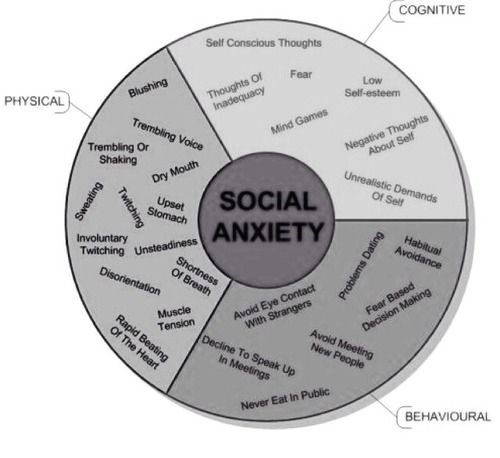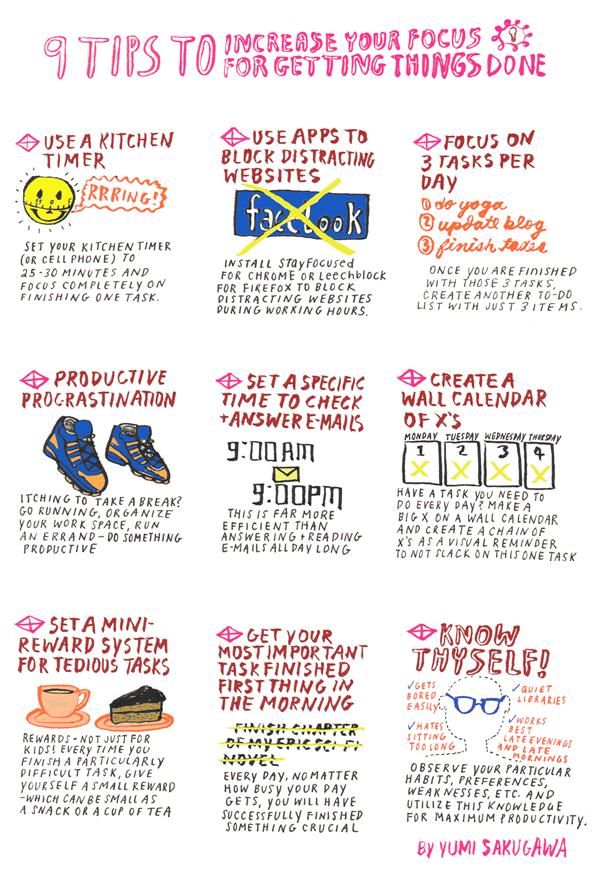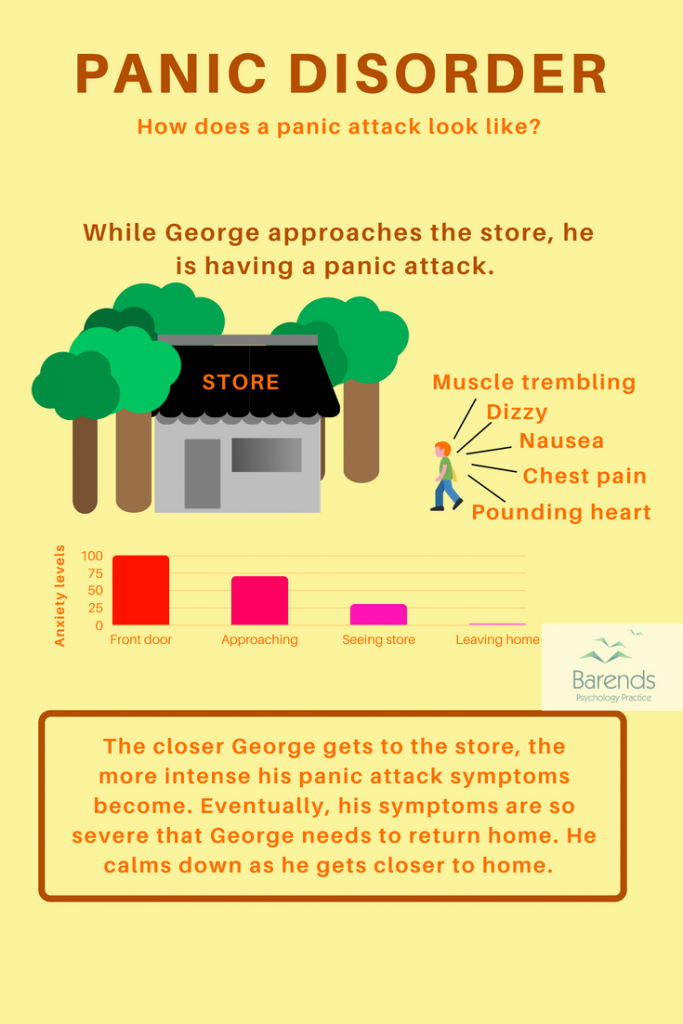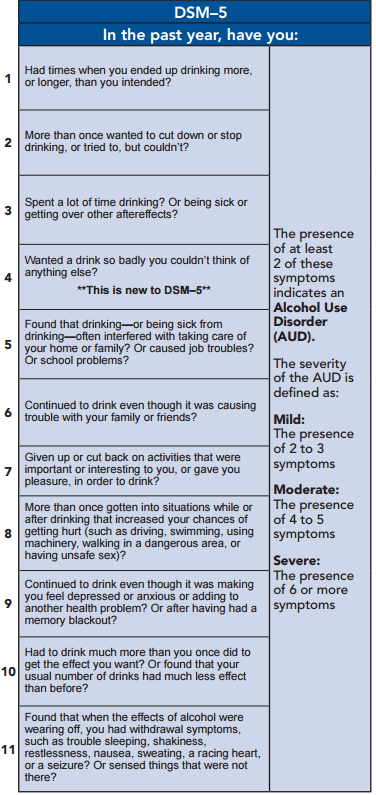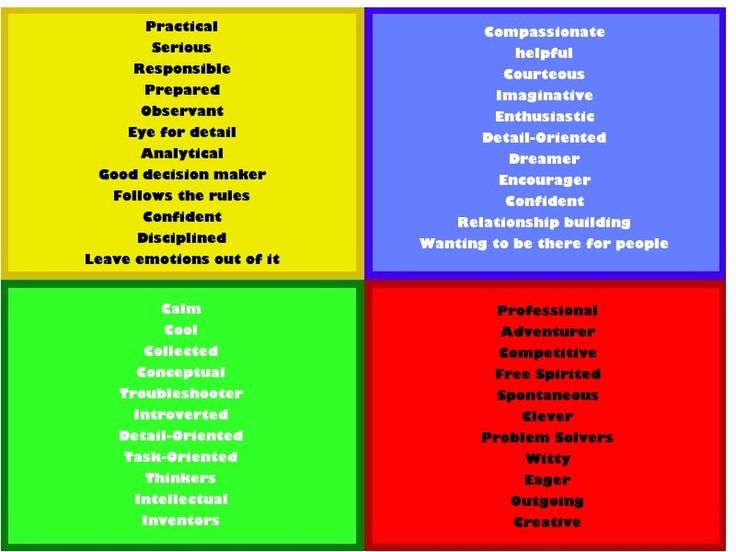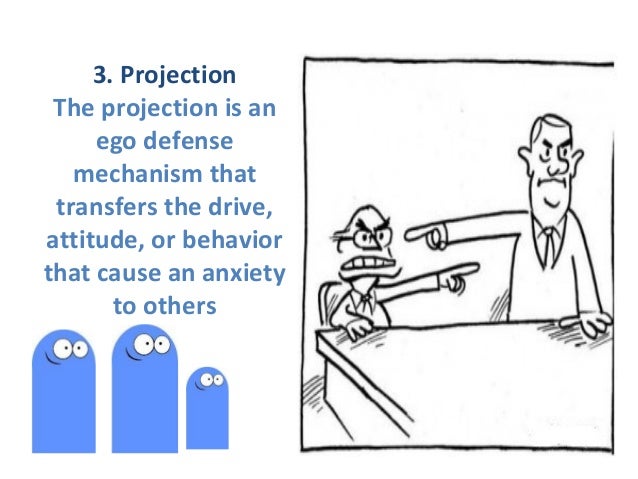Anxiety making me shake
How to Stop the Anxiety Shakes and When to Seek Help
Content
- Overview
- Why does your body shake when you are anxious?
- When does shaking from anxiety become a real problem?
- Is it anxiety or a panic attack?
- Techniques to help with panic attacks
- Treatments to help with anxiety or panic disorder
- The lowdown
Have you considered clinical trials for Anxiety?
We make it easy for you to participate in a clinical trial for Anxiety, and get access to the latest treatments not yet widely available - and be a part of finding a cure.
Check your eligibility
Your body goes into what's known as a "fight, flight, or freeze" response when it's subjected to stress and anxiety. This response is how your body reacts naturally to danger. It helps you react to a perceived threat or life-threatening event¹ in order to keep you safe.
During this response, your body becomes flooded with stress hormones, such as epinephrine and cortisol. Your heart rate, breathing, and blood pressure all increase as your body prepares itself to deal with the stressor. In this situation, your body and brain interpret anxiety as a signal to either escape from danger or stand your ground. This primes your muscles to act, which leads to shaking or trembling.
Shaking is a natural physiological response to stress. Through evolution, it developed to help people recognize dangerous situations so that they could escape or defend themselves.
This is why when you face stressful situations in modern life, you get nervous due to this built-in evolutionary response. As you’re facing a situation that's dangerous, scary, or exciting for you, it's natural for you to feel anxious.
The issue isn't the anxiety or the shaking itself. The issue is when you can't control the anxiety you are feeling, even when you're not even facing a stressful situation, in which case you may have an anxiety disorder.² People with an anxiety disorder may find they shake even without being in a dangerous situation. Types of anxiety² that can cause shaking include:
Types of anxiety² that can cause shaking include:
Generalized anxiety disorder (GAD)
If you have a generalized anxiety disorder (GAD), you are likely to experience excessive worry or anxiety that you are unable or find difficult to control most days for a minimum of six months. The anxiety could be about:
Symptoms include restlessness, irritability, muscle tension, fatigue, difficulty concentrating, or sleep problems. You may also experience shaking in conjunction with anxious thoughts even if there isn’t a clear trigger.
Panic disorder
If you have panic disorder, you may find yourself frequently worrying about when you will experience another panic attack. You actively try to avoid future attacks by avoiding situations, behaviors, or places you associate with panic attacks. Shaking might occur before, during, or after a panic attack.
Post-traumatic stress disorder (PTSD)
With Post-traumatic stress disorder (PTSD), you are living with the chronic effects of trauma and coping with unprocessed traumatic memories. This makes you on alert for ongoing threats or attacks.³ PTSD can lead to physiological changes in the body and its response to the surrounding environment. For instance, you may feel hypervigilant and startle easily. You can start to shake in response to being startled, feeling threatened, or encountering a situation that triggers memories of past trauma.
This makes you on alert for ongoing threats or attacks.³ PTSD can lead to physiological changes in the body and its response to the surrounding environment. For instance, you may feel hypervigilant and startle easily. You can start to shake in response to being startled, feeling threatened, or encountering a situation that triggers memories of past trauma.
When you feel a sudden rush of intense emotion or nerves, it's likely your body responding to a situation. You might experience nausea, sweating, or shakiness, among other symptoms. If this is your first experience, you may be wondering if you're experiencing anxiety or a panic attack.
Anxiety and panic attacks are two different conditions.⁴
GAD is often characterized by anxiety or worry about future events, anticipating a negative outcome. Symptoms include general uneasiness and muscle tension and the onset is typically gradual. On the other hand, panic attacks are short bursts of extreme fear that come on suddenly and are characterized by symptoms⁵ including:
Brief chest pain
Increased heart rate
Shortness of breath
Nausea
Fear of dying
Temperature changes, either hot or cold
Panic attacks are triggered by an extreme fear response to a perceived threat occurring right at that moment.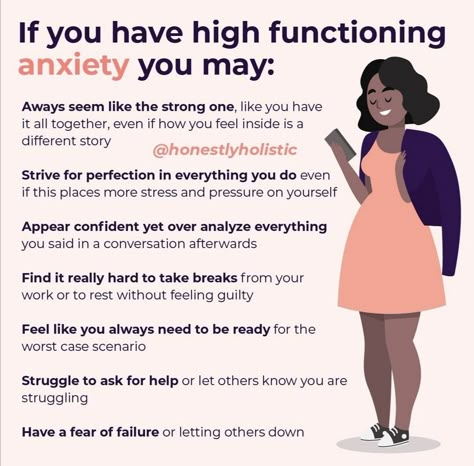 The body’s "fight-or-flight" response makes you hardwired to handle immediate danger. Panic attacks typically last less than 30 minutes and can occur once or repeatedly.
The body’s "fight-or-flight" response makes you hardwired to handle immediate danger. Panic attacks typically last less than 30 minutes and can occur once or repeatedly.
The shaking caused by a panic attack tends to pass as the attack ends. However, if you're wondering how to stop shaking from anxiety, you can try techniques including the following:
Deep breathing – Slow, deep breaths can help to bring a sense of calm and reduce hyperventilation.
Exercising – Exercise releases pent-up energy and reduces muscle tension to ease physical stress, and distracts your brain from anxious feelings.
Progressive muscle relaxation – This is a technique⁶ where you tense different body muscles to release the tension in each one.
Yoga – Regulate your breathing and calm your body through a variety of flowing poses. Regularly practicing yoga can help decrease your symptoms of anxiety.
Meditation – This is a practice of focused concentration that brings your mind back to the present moment and allows you to acknowledge your current feelings, whether positive or negative.
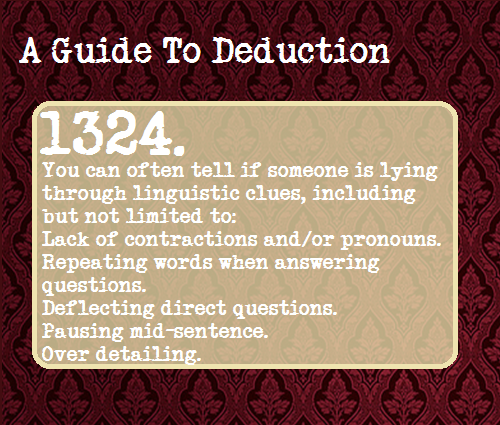 Meditation can work to reduce feelings of anxiety by also incorporating deep breathing.
Meditation can work to reduce feelings of anxiety by also incorporating deep breathing.
A Guide To Meditating For Anxiety
Other anxiety or panic disorder treatments can provide a long-term solution, including:
Psychotherapy – Through cognitive behavioral therapy (CBT), you work with a therapist to recognize unhelpful thought and behavior patterns that perpetuate anxiety, and learn to challenge and modify them. You will also learn specific relaxation, distraction, and exposure strategies to manage panic. Dialectical behavioral therapy (DBT) works on enhancing emotional regulation, managing distressing emotions, and learning mindfulness strategies.
Medications – If you experience panic attacks or anxiety frequently, you may want to talk with your doctor about medication. Your doctor may prescribe benzodiazepines, antidepressants such as SSRIs (which also have evidence in anxiety), or beta-blockers like propranolol.

What You Need to Know About Your Anxiety Medication
If you're experiencing shaking and any other physical symptoms of anxiety and/or panic attacks, remember that i's just your body's natural “fight-or-flight” response to a stressful situation.
However, while shaking from anxiety isn't dangerous, that doesn't mean you have to deal with it. There are effective treatments, including relaxation techniques, therapy, and medication. Talk with your doctor to get a treatment plan for managing the shaking and easing your anxiety overall.
Anxiety Shaking: Causes and Treatments
We include products we think are useful for our readers. If you buy through links on this page, we may earn a small commission. Here’s our process.
Healthline only shows you brands and products that we stand behind.
Our team thoroughly researches and evaluates the recommendations we make on our site. To establish that the product manufacturers addressed safety and efficacy standards, we:
- Evaluate ingredients and composition: Do they have the potential to cause harm?
- Fact-check all health claims: Do they align with the current body of scientific evidence?
- Assess the brand: Does it operate with integrity and adhere to industry best practices?
We do the research so you can find trusted products for your health and wellness.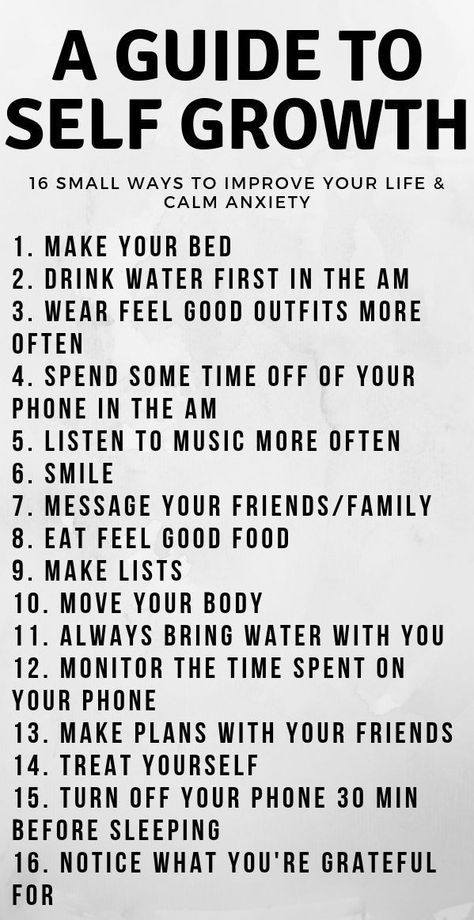
Anxiety and worry are emotions everyone feels at some point. Approximately 40 million American adults have anxiety disorders.
Feelings of anxiety can trigger other symptoms, such as:
- muscle tension
- difficulty concentrating
- increased heart rate
- uncontrollable shaking or trembling
Tremors caused by anxiety aren’t dangerous, but they can be uncomfortable. Sometimes losing control of your body when you’re having anxiety can quickly escalate into other symptoms.
This article will explore the connection between shaking and anxiety, and leave you with some ideas for how to treat this symptom.
Panic disorder and anxiety that leads to attacks have some things in common, but they’re not the same condition. Both conditions can lead to physical symptoms that feel out of your control, including trembling and “the shakes.”
If you have generalized anxiety disorder, ordinary situations may make you feel intensely fearful or overwhelmed.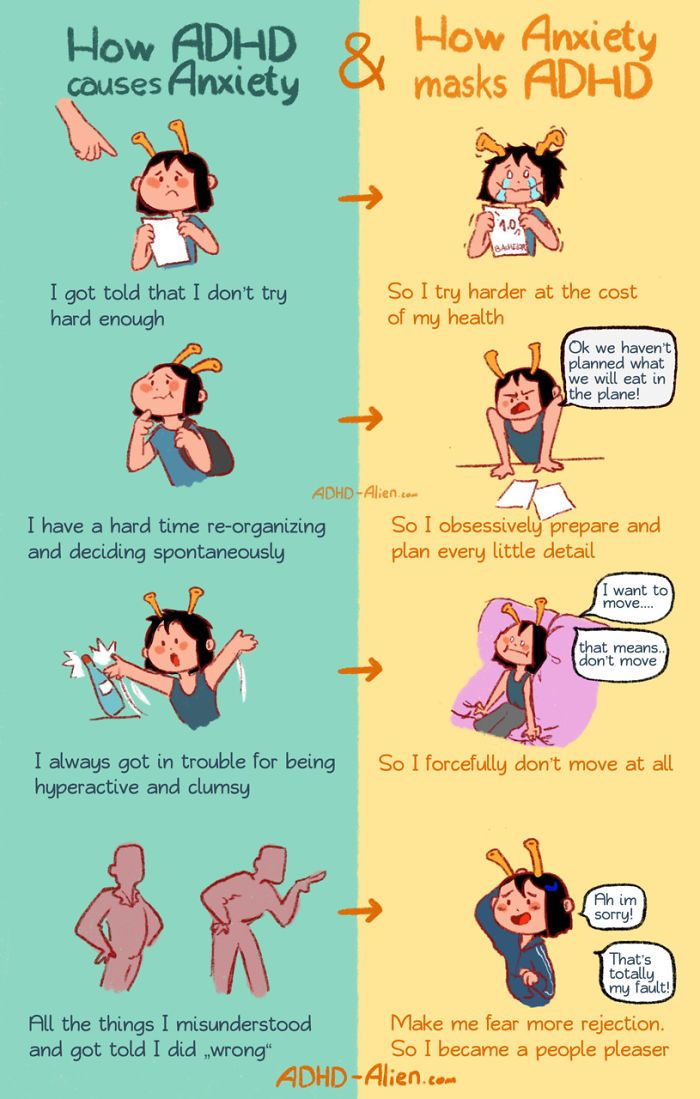 You may find it hard to concentrate. You may also experience your mind going “blank” as the fear and worry from your thoughts take over.
You may find it hard to concentrate. You may also experience your mind going “blank” as the fear and worry from your thoughts take over.
In addition, headaches, muscle aches, and other pains you can’t explain may accompany your anxious thoughts.
Panic attacks don’t always have a clear cause. When you have panic attacks due to a certain trigger, it’s called an expected panic attack. That means they’re somewhat predictable.
The symptoms of a panic attack can be seen and identified by someone else, while the symptoms of anxiety take place mostly in your mind and may be harder to spot.
When you’re having severe anxiety, it can cause physical symptoms. Perceived stress, danger, and high levels of emotion usually set off anxiety. Anxiety can lead to a panic attack, but it doesn’t always.
Similarly, having a panic attack doesn’t mean that you have an anxiety condition.
When your body is subjected to stress, it goes into fight, flight, or freeze mode. Stress hormones flood your body and speed up your heart rate, blood pressure, and breathing.
Your body prepares to deal with the stressor, interpreting the anxiousness as a signal that you’ll need to stand your ground or escape from danger. Your muscles become primed to act, leading to a trembling sensation, twitching, or shaking.
Other symptoms of anxiety and panic disorder include:
- difficulty concentrating on anything besides anxious thoughts
- fatigue and muscle ache
- headache or migraine
- nausea, vomiting, or loss of appetite
- rapid breathing
- excessive sweating
- feeling tense, irritable, and “on edge”
Once you’ve determined that you’re having a panic or anxiety attack, fighting against your symptoms might make them last longer.
The most effective strategy to stop trembling from panic or anxiety is to guide your body back to a relaxed state. Certain techniques can help you calm down:
- Progressive muscle relaxation. This technique focuses on contracting and then releasing different muscle groups.
 It can be done in tandem with deep breathing. The goal in practicing this technique is to get your body to relax. This can stop you from trembling.
It can be done in tandem with deep breathing. The goal in practicing this technique is to get your body to relax. This can stop you from trembling. - Yoga poses. The child’s pose and sun salutations can help you regulate your breathing and bring calm back to your body. Regular yoga practice has been shown to reduce anxiety symptoms.
- Mindfulness exercises. Exercises that incorporate meditation can also help stop you from shaking. Mindfulness meditations to guide you through 5 to 10 minutes of awareness and relaxation. These can be found on apps, such as Headspace, and online.
Practicing these techniques when you’re not in a state of panic or anxiety will make them more effective when you need to use them.
Long-term solutions for people with anxiety or panic disorder can include medication and help from a licensed therapist or psychiatrist. Several methods of therapy can help you identify the triggers of your anxious thoughts and feelings. These include:
These include:
- cognitive behavioral therapy (CBT)
- talk therapy
- eye movement desensitization and reprocessing therapy (EDMR)
If you frequently experience anxiety or panic attacks, you should speak to your doctor about medication treatment options. Those include:
- Benzodiazepines. These are drugs that help relax your mind and calm your body. Alprazolam (Xanax), chlordiazepoxide (Librium), and clonazepam (Klonopin) are examples of this class of drug used for short-term anxiety and panic relief. Both prescribers and patients should be aware that benzodiazepines are associated with a risk for tolerance, dependence, and addiction. The Food and Drug Administration requires that they carry a boxed warning.
- Selective serotonin reuptake inhibitors (SSRIs). This is one class of drug that might be prescribed for long-term treatment. Escitalopram (Lexapro), fluoxetine (Prozac), and paroxetine (Paxil) are examples of this type of drug usually prescribed to treat depression and anxiety.

- Monamine oxidase inhibitors (MAOIs). MAOIs are used to treat panic disorder, but can work for anxiety, too. Dicarboxamide (Marplan) and tranylcypromine (Parnate) are examples of this type of medication.
Integrative treatments, like herbal teas and supplements, can cut down on anxiety and panic attacks for some people. More research needs to be done on herbal treatments to determine whether they’re effective.
Remember that herbal remedies aren’t necessarily better for your body than traditional medication. Herbals have properties that cause side effects and interactions just like medication does.
Online therapy options
Read our review of the best online therapy options to find the right fit for you.
Physical symptoms that feel out of your control can be frightening and make your anxiety feel even worse. The good news is that anxiety and panic can be helped with medication, therapy, and a proper diagnosis.
Make an appointment with your doctor if you’re experiencing anxiety-induced trembling or shaking.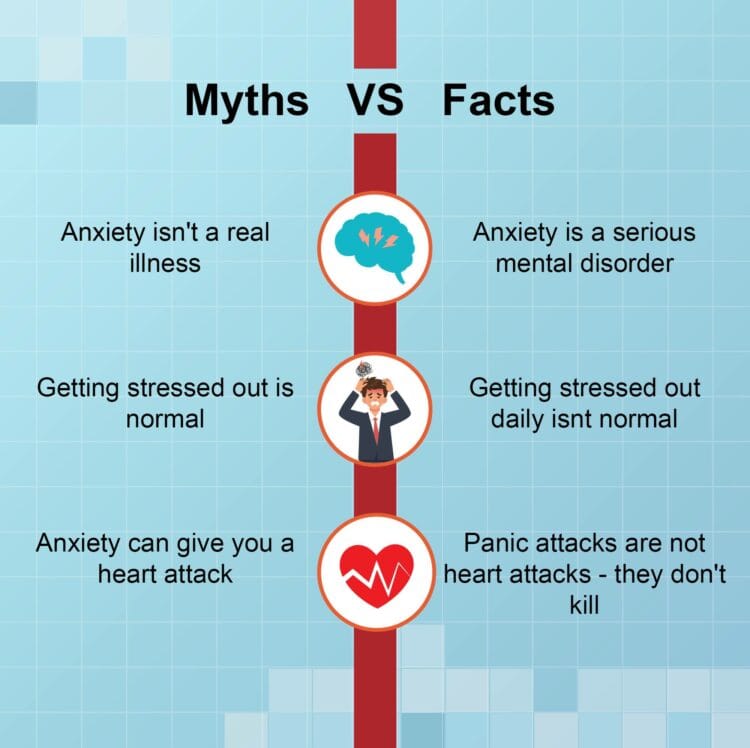
Unreasonable anxiety - why there is a constant state of anxiety
All people experience anxiety from time to time. For example, you can get nervous when you have a fight with a loved one or before taking an exam. Anxiety itself is not a very pleasant emotion, but it is completely normal.
Sometimes anxiety becomes persistent and uncontrollable. In situations where it interferes with everyday life, takes on a permanent or excessively acute character, the problem cannot be ignored. You should contact a specialist and figure out what anxiety means in your case. Perhaps you need qualified help. nine0003
Anxiety disorders are one of the most common mental illnesses in modern society.
Anxiety disorders are one of the most common mental illnesses in modern society. Usually a person cannot understand what anxiety means, from which it is impossible to get rid of. The disease makes you feel scared and restless for no apparent reason.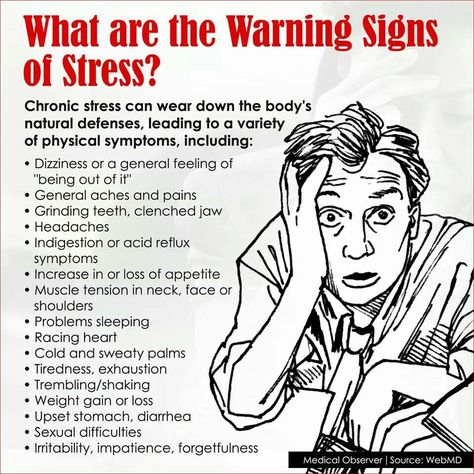 If left untreated, it becomes a long-term problem and significantly reduces the quality of life. At the same time, no matter what form of anxiety disorder the patient suffers from, an experienced specialist will always select a therapy that will help to cope with the disease. nine0003
If left untreated, it becomes a long-term problem and significantly reduces the quality of life. At the same time, no matter what form of anxiety disorder the patient suffers from, an experienced specialist will always select a therapy that will help to cope with the disease. nine0003
What is the alarm
Common signs of anxiety disorders to look out for include:
- Feeling nervous and uncontrollable restlessness that is not appropriate for the situation;
- Unreasonable panic, premonition of catastrophe or death;
- Increased activity of the autonomic nervous system: dizziness, sweating, trembling, rapid breathing, palpitations, pain in the heart, dry mouth, nausea, stool disturbance; nine0018
- Sleep and appetite disorders;
- Problems with concentration, inability to distract from the object of concern;
- Anxiety, irritability;
- Strong, uncontrollable feeling of fear in relation to ordinary situations (phobias).
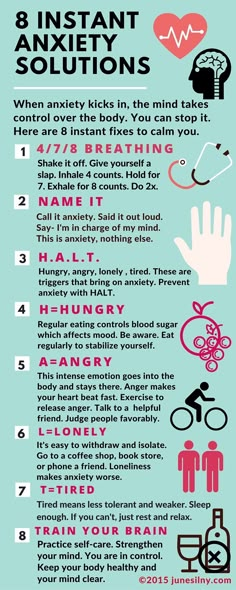
Anxiety, whatever it may be, always has characteristic features and causes. The concept of "anxiety disorder" is general and corresponds to several diagnoses, each of which has its own characteristics. It is important to distinguish one from the other in order to correctly diagnose and choose the correct treatment. Experience and high qualifications will allow a specialist to do this without difficulty. nine0003
Generalized Anxiety Disorder (GAD) is a mental illness characterized by so-called non-fixed anxiety. This is groundless anxiety, which does not depend on specific circumstances, but is persistent and uncontrollable. Physical manifestations in the form of vegetative symptoms are added to anxiety. All this greatly interferes with studying, working and communicating. Clinically significant is the presence of signs of GAD for 6 months.
A distinctive feature is the generalization of sensations: constant anxiety in GAD does not have a specific stressor, it is directed to life circumstances in general, including minor and unlikely situations.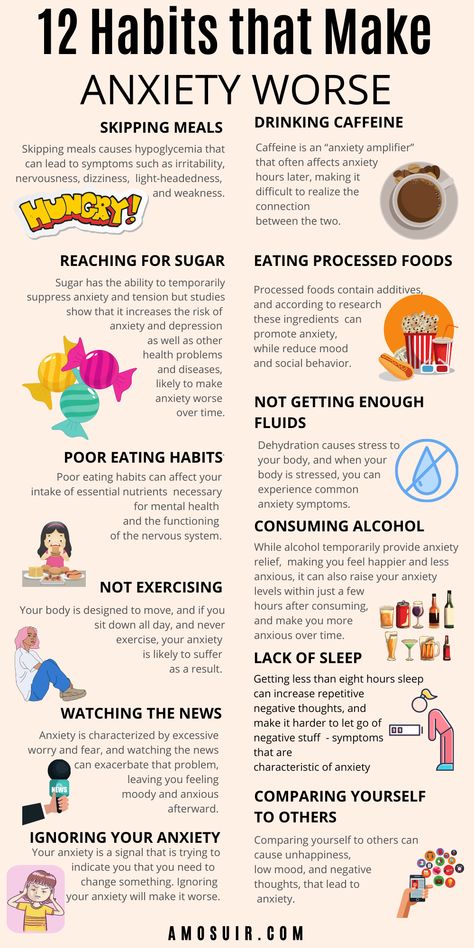 The course is permanent, the symptoms are always present, from time to time they intensify, but they never acquire an acute form, as in panic attacks. nine0003
The course is permanent, the symptoms are always present, from time to time they intensify, but they never acquire an acute form, as in panic attacks. nine0003
The concept of "anxiety disorder" is general and corresponds to several diagnoses, each of which has its own characteristics.
Panic disorder (panic attacks) are abrupt episodes of panic and discomfort, which are accompanied by fear of death and physical manifestations: interruptions in the heart, feeling short of breath, dizziness.
Unlike GAD, panic attacks occur spontaneously and acutely. Patients are in constant expectation of an attack, they experience a debilitating feeling of anxiety. With GAD, a person is constantly in a state of anxiety, but it is not associated with the expectation of an attack, but with bad forebodings and fears about all kinds of life situations. nine0003
Panic attacks are also important to distinguish from phobic disorders. Attacks can be one of the signs of a phobia and speak of its severity.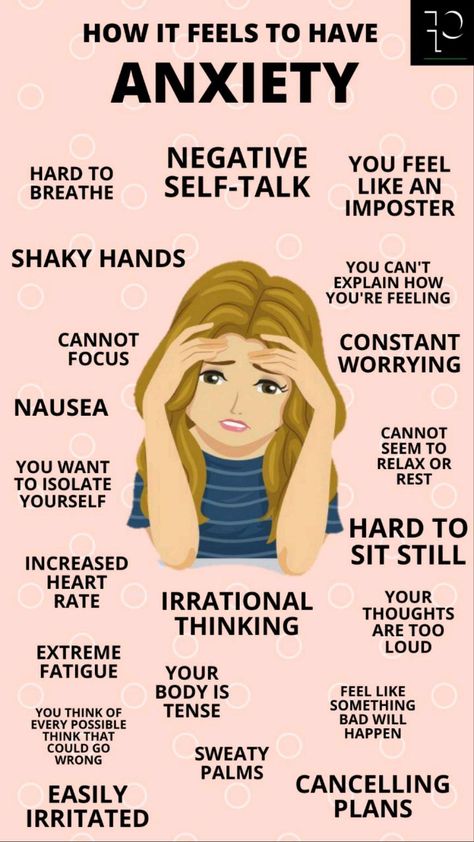 If there is a primary phobia, then it will be the main diagnosis.
If there is a primary phobia, then it will be the main diagnosis.
This disorder should be differentiated from obsessive-compulsive disorder (OCD), in which panic attacks can occur only when trying to suppress intrusive thoughts, and from post-traumatic stress disorder (PTSD). In the latter case, anxiety occurs only under certain circumstances that remind the patient of the cause of the trauma. nine0003
People suffering from this disorder do their best to avoid frightening circumstances, which can impose significant restrictions on lifestyle.
Phobic disorder (phobias) are acute episodes of panic that are associated with specific situations and objects. People suffering from this disorder do their best to avoid frightening circumstances, which can impose significant restrictions on lifestyle. nine0003
Among the phobias, there are social phobia - an overwhelming fear of social interactions, and agoraphobia, which is a complex of similar fears associated with the fear of open and closed spaces. There are other isolated phobias, but a distinctive feature of this type is that the fear occurs in strictly defined situations and is limited only to them.
There are other isolated phobias, but a distinctive feature of this type is that the fear occurs in strictly defined situations and is limited only to them.
Anxious depression. The usual signs of an anxiety disorder are characterized by nervousness, irritability, problems with sleep and concentration. But, unlike other disorders, the depressive component is also mandatory - depressed mood, melancholy, lack of interest in life. In mixed anxiety and depressive disorder, the symptoms of anxiety and depression are present to an equal degree, without a clear predominance of one over the other, which does not allow them to be considered separately from each other. nine0003
Schizoaffective disorder is another disease in which mood disorders are observed: unreasonable anxiety, guilt, problems with concentration, irritability, and more. However, according to ICD-10, this diagnosis can only be confirmed when the psychotic symptoms of schizophrenia, such as delusions and hallucinations, are combined with affective disorders of a depressive or manic nature.
Obsessive-compulsive disorder (OCD) is obsessive ideas based on irrational thoughts and fears that force a person to perform certain actions - rituals (ritual behavior). nine0003
To alleviate concerns, a person can endlessly wash their hands, even if the skin on them becomes irritated and cracked.
Obsessions and compulsions greatly interfere with daily activities. If a person tries to ignore these thoughts, anxiety increases. Because of this, the patient is forced to continue to perform the ritual in order to relieve stress. OCD often centers around specific themes, such as the fear of germs. To alleviate concerns, a person can endlessly wash their hands, even if the skin on them becomes irritated and cracked. nine0003
Alarm causes. Diagnostics
The causes of anxiety disorders are varied, as are the types themselves. Usually, in the pathological state of unreasonable anxiety, the causes consist of a complex interaction of factors that may include:
- genetic predisposition;
- imbalance of neurotransmitters;
- personality traits: people with a labile psyche, sensitive temperament, prone to negative emotions; nine0018
- stressful situations, mental trauma, unfavorable living conditions, somatic diseases;
- use of drugs, alcohol, improper medication.

Only a qualified psychiatrist can correctly identify the causes of anxiety and provide assistance. You can not delay seeking help, as the condition may worsen and be complicated by social isolation, suicidal actions and various types of addiction. nine0003
To conduct a complete diagnosis of the condition, the doctor uses the following methods:
- Psychiatric examination - a specialist collects a detailed anamnesis, takes into account clinical manifestations and compares them with diagnostic criteria.
- Pathopsychological research is a modern technique that helps to understand the personal characteristics and psychological state of the patient.
- Laboratory and instrumental examination - Neurotest and Neurophysiological test system allow you to get an objective idea of the state of the nervous system and cognitive functions, EEG and other instrumental methods help to exclude organic pathology
Treatment of anxiety and anxiety disorders
Treatment depends on the type of disorder and may include one or a combination of the following approaches.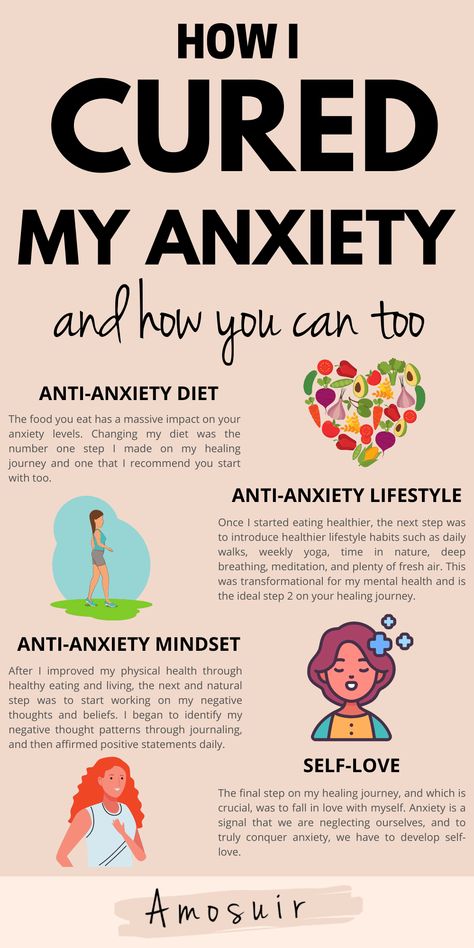
Individual psychotherapy is the main treatment for any type of disorder. Allows you to find out why anxiety has arisen and whether it is pathological. Clinical signs are analyzed and problems are worked out.
One of the effective methods for correcting anxiety disorders, especially phobic ones, OCD and GAD, has become cognitive behavioral therapy. With the help of modeling problem situations, the patient, under the guidance of a doctor, learns to cope with panic and acquires skills that allow him to return to a normal lifestyle. nine0003
Drug therapy to eliminate acute symptoms, relieve anxiety and depression, if necessary, mild pharmacotherapy with antidepressants or modern tranquilizers can be used.
As additional methods that accelerate adaptation and help to cope with stress, physiotherapy, breathing exercises, art therapy, biofeedback therapy are used.
Important
When to seek immediate help: nine0003
- When the condition interferes with work, relationships and other areas of life;
- If the person cannot control their fear or intrusive thoughts;
- If a person feels constantly depressed, disturbed in sleep and concentration, consumes large amounts of alcohol to cope with anxiety;
- There are suicidal thoughts.

The symptoms of an anxiety disorder do not go away on their own. This is a serious problem that, without specialized help, progresses over time. To avoid this and return to a full life without painful fears, you need to contact a specialist. The sooner the patient starts therapy, the faster and easier it will be to get the result. nine0003
Anxiety and panic attacks in a person's life
Almost all people experience some anxiety from time to time.
Anxiety and anxiety in socially significant situations for a person is an absolute norm and is not a serious cause for concern.
In certain situations that require serious decisions, concentration of attention, some degree of anxiety is even necessary. This state is short-lived and disappears after solving the problem situation, without affecting the quality of human life. nine0003
However, in some cases, an anxious state captures a person so much that it does not allow him to live fully. A constant feeling of tension deprives a person of the opportunity to engage in simple everyday activities.
People who are characterized by such constant and intense anxiety sometimes experience completely unexpected attacks of very strong fear, a sense of impending danger. There is a fear of going crazy, panic.
People suffering from these attacks do not always seek treatment. sincerely believe that they are having a heart attack, since the symptoms of panic manifest themselves quite physically. Experienced during attacks often causes a person to continue to avoid situations in which this condition first appeared. nine0003
Fearing stigmatization, they resort to folk remedies or alcohol or even drugs to get rid of this condition.
Panic attacks are especially frightening also because they seem to arise for no reason, in ordinary life situations, when nothing threatens a person. Instantly arising, panic attacks fetter the body, making a person helpless, exacerbate the feeling of fear and helplessness.
The most common symptoms are:
Difficulty breathing or shortness of breath;
Sensation of suffocation;
Feeling of lightness or conversely, heaviness or pain in the chest;
Trembling, weakness;
Damp palms and profuse sweating;
· Tingling or numbness in hands and feet;
Severe or rapid heartbeat;
· Lethargy, weakness, dizziness, faintness;
· Feeling completely "separated" from one's own body or surroundings; nine0003
Nausea, feeling of emptiness or discomfort in the area of the stomach or intestines;
Feeling hot or cold, "hot flashes".